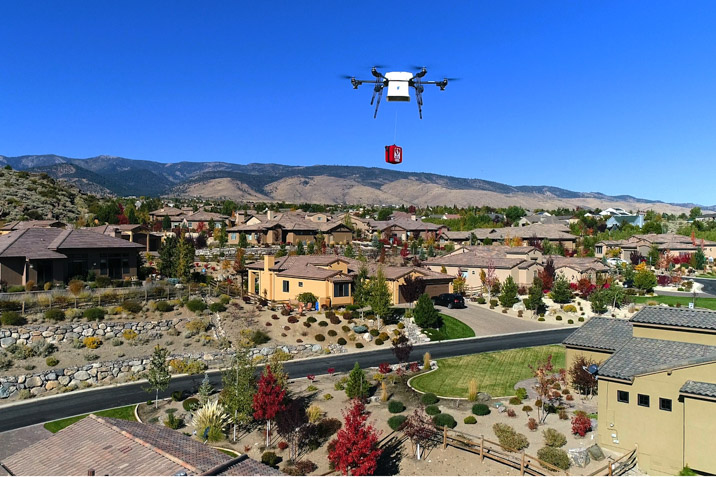Australian cities are changing right before our eyes, as we look to increase wellbeing through the implementation of walkways, pocket parks and activations. But the future will look slightly different, with new and innovative technologies all appearing in the crystal ball of Hatch RobertsDay’s Andrew Miller.
Based in Canada, Miller has recently travelled out to Australia to work with other urban experts within the company. We were able to grab his thoughts on pedestrian access, reducing vehicle traffic, delivery drone services and the future of e-bikes and e-scooters.
Miller’s love for Australian cities is attributed to the familiarity he feels to that of Canadian cities, but both countries share similar positive and negative attributes within their metropolitan areas.
“There’s an emphasis on transit in both counties, but neither are not nearly as good as European cities, where you don’t need a car to get around,” he says.
Barcelona’s ‘super block’ concept is one such solution to ensuring foot traffic and e-mobility, with the Spanish city relying on reduced driver vision to lower speeds as opposed to simply reducing speeds.
“Barcelona will identify a large block in the city and arterial traffic will pass along the perimeter, but within the block, while there's still roads, they are no through roads. If you go in, you must have returned the same way that you came because there's no alternative.
“As part of those infiltrations, they’ve got the whole suite of ‘vision-zero tools.’ They're narrower, the pavement is grittier, the road is curved, so they don’t have sightlines, which results in drivers slowing down. So the combination of slow speeds and a lack of traffic means it's safer for pedestrians, which encourages active transport and human movement.”

While drones are only a relatively new technology in terms of their delivery capabilities, Miller sees them as the most likely to be adopted by governments and cities by the end of the decade.
“I would never encourage a government to take risks, but we should be looking for more opportunities to say yes to innovation rather than no. Drone delivery businesses are already set up in the Northern Territory (for medical supplies).
“Drones are interesting because for really dense areas, for instance the Melbourne CBD, the drone isn't actually the best automated system for tourists. I think sidewalk robots would be better. The issue is sidewalk robots have to interact with people on the ground, whereas a drone is up in the sky, which is an easier regulatory problem to solve, which is why I think you're gonna see drone delivery at scale sooner than robots or automated driving.
“Drones are additionally electric, mechanical, automated and quiet. You can use them 24/7.”
While air taxis are all the rage at the moment, Miller is weary of their uses and abilities in the long term. Currently operating in Rome and on the cusp of being deployed in New York and Japan, the vehicles will serve very specific purposes.

“You'll never use them to go from your home to work or across the country. But if you want to make a three hour trip by car in a place that has no rail, an air taxi will get you there in under an hour.”
Laying claim to his own personal e-bike back in Toronto, Miller’s former role as a Board Director on a micro-mobility company puts him in good stead to speak about the benefits of e-mobility vehicles. The Toronto local found it concerning that Australian e-scooter riders were on the footpaths with pedestrians, as opposed to on the roads like in other cities across the globe.
“We have to provide infrastructure for all people that don’t travel in cars. Bikes, e-bikes, e-scooters and pedestrians. It’s an investment that our cities simply have to make.”
To read more about Hatch RobertsDay, click here.
Top Image: Canning Bridge Activity Centre, Hatch RobertsDay.

